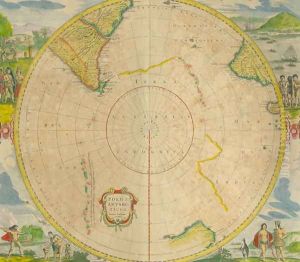Janssonius, Jan Paintings
Jan Janssonius, also known as Johannes Janssonius, was a notable figure in the world of cartography and publishing during the 17th century. Born in 1588 in Arnhem, Netherlands, into a family of publishers, Janssonius was destined to leave a significant mark in the field of map-making and publishing. He moved to Amsterdam, which at the time was a flourishing center for cartography and publishing, attracting talents from across Europe. This vibrant environment shaped Janssonius's career, allowing him to establish himself as a prominent publisher and cartographer.
Janssonius's work was profoundly influenced by the intense competition and collaboration among cartographers of his time. He married the daughter of Jodocus Hondius, another renowned cartographer, which further integrated him into the network of mapmakers and publishers. Together with his brother-in-law, Henricus Hondius, Janssonius continued the business of producing atlases that were initiated by the Mercator-Hondius family. They expanded the Atlas Novus to include a wide range of detailed maps, becoming a major competitor to Willem Blaeu, another giant in the world of cartography.
Throughout his career, Janssonius published numerous works, including city views, atlases, and individual maps. One of his most significant contributions was the publication of the 'Atlas Major,' one of the largest and most comprehensive atlases of the time, featuring detailed maps of various parts of the world. His work was not only a testament to the art and science of mapmaking but also a valuable resource for understanding the geographical knowledge and perceptions of the 17th century.
Janssonius's legacy is marked by his contribution to the advancement of cartography and his role in the golden age of Dutch mapmaking. His maps and atlases are celebrated for their accuracy, detail, and artistic quality, reflecting the high standards of Dutch cartography in the 17th century. Jan Janssonius passed away in 1664 in Amsterdam, but his work continues to be admired and studied by historians, cartographers, and collectors around the world, showcasing the enduring impact of his contributions to the field.
